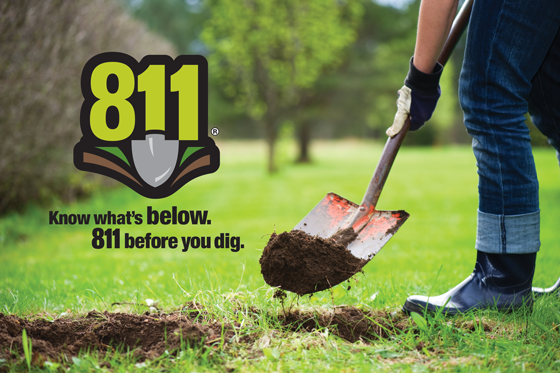 |
| Help us educate the public about natural gas pipeline safety |
| Like you, National Grid is committed to the safety of the communities we serve. We have stringent programs in place to maintain and improve the safety of our 35,682 miles of pipelines in New York, Massachusetts and Rhode Island. But we can’t do it alone. |
| Our natural gas infrastructure underlies many cities and towns in your jurisdiction, and the surrounding countryside as well. The most serious threat to natural gas pipelines is from dig-ins by excavators, contractors, farmers and even do-it-yourselfers. Anyone who picks up a shovel and starts digging a hole without the proper safeguards in place could trigger an accident resulting in a leak, fire or explosion. That’s why we need your help. |
 |
|
 |
|
 |
| What can you do? |
As a public official, you are in a position to help us protect your constituents and our communities by getting the word out about how to prevent damage to natural gas pipelines and how important that is. Please communicate the following messages: |
| |
| • |
|
No job is too small for an 811 call. State laws require that anyone planning to dig or move earth in any way contact their local one-call center first. They must dial 811 or enter an online request at least 72 hours before digging in Massachusetts and Rhode Island (excluding weekends and legal holidays) and at least two full working days in New York (excluding the date of their request, weekends and legal holidays). The one-call center will notify underground facility owners in the immediate area so the location of pipelines and other facilities can be marked prior to any excavation. This service is free, and it’s the law!
|
|
| |
⚬ |
|
Be sure to explain that locate marks are not precisely accurate and never indicate utility depth. The excavator, contractor or DIYer must HAND DIG TO CONFIRM UTILITY LOCATION AND DEPTH WITH THEIR OWN EYES. |
|
| • |
|
If an excavation will cross a cast iron gas main or run parallel nearby, the 811 service and National Grid must be notified well in advance. Cast iron gas mains in our Northeast communities may be easily damaged when the earth near them is moved in any way. |
|
| • |
|
Promote safety training for the excavators you hire. Any excavators hired by local government in New York must have completed an approved excavation safety training program from their local 811 center. |
|
| • |
|
National Grid has the right to restrict certain activities along our gas transmission pipelines rights-of-way. These right-of-way locations – comprised of the area along each side of our transmission pipelines – are usually marked on maps filed with local municipalities. Their presence (but not their exact location or depth) is also indicated by pipeline markers. |
|
| • |
|
We require free and clear access to our gas transmission pipelines at all times for inspections, maintenance and leak detection activities. We prohibit construction or other activities in our pipeline rights-of-way that could block access for our personnel or for safety crews in the event of a pipeline emergency. |
|
| • |
|
If members of the public see construction occurring near a gas pipeline marker with no utility personnel present, or they notice any type of suspicious activity near a pipeline marker, have them call the number listed on the marker to report it. |
|
| • |
|
If a gas meter is located inside a home or business, National Grid will need access to the meter and gas service entry to perform mandated inspections. We are required by federal and state regulation to inspect and maintain our delivery, pressure control and gas metering equipment. |
|
 |
|
 |
| Please keep in mind that all aspects of the excavation industry are coping with the Covid-19 pandemic, and everyone’s resources have been affected. You can help prevent delays by notifying 811 of your planned excavation with as much lead time as possible: up to 10 working days for excavations in New York and 30 days in Massachusetts and Rhode Island. |
|
|
|
|
